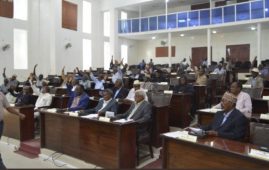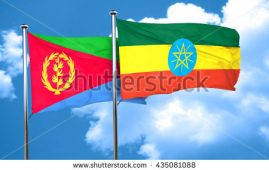Transforming Ethiopian agriculture from its current subsistence state to market oriented production system forms the basis of agricultural development strategy of the government. The agricultural extension service is one of the institutional support services that has a central role to play in the transformation process. The agricultural extension service plays a critical role, since it contributes to the development of the skill and knowledge of farmers to adopt new and improved technologies. According to the World Bank definition, extension service is a process that helps farmers become aware of improved technologies and adopt them in order to improve their efficiency, income and welfare. However, the agricultural extension service in Ethiopia is broader in its service reach to include credit , input supply and agricultural produce marketing.
Agricultural extension services in Ethiopia until about 2002 were focused on increasing production and productivity in view of achieving food security. However, it had become apparent around 1996 that without integrating farmers into the market, sustained growth in the agricultural sector would not be realized. This service has enabled farmers to focus on quality and standard of their produce to supply products more competitively both to the domestic and export market. Though agriculture has been practised by the country’s farmers for centuries, coordinated agricultural extension service is a recent phenomena. Due to lack of the necessary knowledge and skills to utilize technologies vital to improve and increase production, the country’s agriculture has been for centuries limited to subsistence level. However, the last two decades have witnessed relative improvement and increase in production and productivity in the country’s agriculture. The agricultural extension service that has been provided to the farmers via different strategies has contributed the loin’s share to the breakthrough in the sector.
Pre- 1991 agricultural extension services failed to bring the necessary change in the sector due to the utilization of inadequate strategies in providing the service, says communication and public relation directorate director with the ministry of agriculture. Since 1995, the Participatory Demonstration, Extension and Training System (PADETES) has been implemented to support the country’s farmers and ensure food security. The main purpose of the extension service according to the draft document is to realize the country’s strategy of agriculture-led development industrialization via improving production and productivity. It also aspires to increase the production of major staple crops and animals to boost income of the farming community.
The PADETES has been implemented by training the farmers with ready-made technological packages on a very minimum portion of their plots. The training, provided for agricultural extension workers, focuses on properly using fertilizers, land, ways of sowing and other technical aspects that help to boost productivity with very small plot of land. The system also inculcates provision of inputs and credit to the farmers very close to their residences via farmers cooperatives and unions. Even if this system has brought tangible outcomes in increasing the farmers’ production, extensively making farmers in different corners of the country beneficiaries of the service has become a trying task. It has also encountered considerable resistance among the farmers who are strongly accustomed with backward and traditional farming experiences, Tarekegn noted.
From 2008 onwards, the government has been focusing on extending the service to as much areas of the country as possible. One of the systems used to extend the service is introducing best experiences of the model farmers to others within a short span of time. Tarekegn says this strategy is further helping the farmers by creating an opportunity to work together for a better production. The government has established 25 technical and vocational training centres for agriculture to train professionals who could support farmers. They are trained with crop production, natural resource conservation and development and animal sciences and allocated to work close with the farmers. Presently, more than 64 thousand agricultural extension workers( three extension workers for each kebele) are at work in the rural parts of the country. Moreover, more than 10 thousand farmers training centres are constructed to timely train farmers on improved technological inputs. As the system also considers the importance of pastoralism side by side to sedentary agriculture, more than 2,000 animal health clinics are established to protect the health animals and better develop the sub-sector.
Prior to 1995, farmers who could access extension service were not more than 35 thousand but now more than 9 million farmers in different parts of the country could easily get the service in their vicinities. There were about 14 thousand unions who would provide inputs to the farmers. However, their number has now grown to more than 33 thousand, more than a double. According to the Director, presently, more than 1,200 agricultural researchers who work in 62 research centres are supporting the farmers with different research outcomes.
The amount of chemical fertilizers used by the farmers has also been increasing in the last two decades. It has grown from about 15 thousand tons to 1.16 million tons between 1991 and 2012. Similarly, the amount of improved seeds used by the farmers has grown from about 133 thousand quintals to 1.3 million quintals in the same period. The gradual expansion of the extension service to more areas of the country has contributed a lot in maximizing agricultural production especially during the years of the last decade. In 1991, the country produced only 52 million quintals of staple crops and this amount already has grown to 89 million quintals in 1992, which is before the country’s agricultural development policy was implemented. Now, after the implementation of the policy the country’s overall agricultural production has reached 218 million quintals this year, which shows a 319 per cent increase as compared with the 1991 amount of production. Productivity per hectare of land has also increased from 6.5 quintals per hectare to 18 quintals per hectare within the same period, Tarekegn said.
The agricultural extension service has also created a situation where farmers are utilizing more farmlands both to produce new crops and increase their level of production. Within the last two decades additional 5 million hectares of land is used for agriculture and the area of farmlands in the country has now reached 12 million hectares. The research centres have also contributed undeniable share in boosting agricultural production and productivity in the country. The centres have provided 728 research outcomes that were undertaken on crops, animals, forests, water and soil conservation to the farmers.
To sum up, the agricultural extension service has enabled the country’s agriculture to register an average growth of 8.5 per cent for the last consecutive 8 years and hugely contribute to the consistent economic growth. The sector has contributed 41 per cent to the Gross Domestic Product (GDP) of the country. As agriculture still remains to be the source of more than 85 per cent of the country’s foreign exchange earnings, strengthening and further expanding the extension service in the coming years is mandatory.
**************
*Originally published on the Ethiopian Herald on May 26, titled ‘Extension service-the engine behind agricultural take off in two decades’, authored by Abraham Dereje.
Check the Agriculture archive for related posts.






Agriculture is the backbone of Economy in Ethiopia.This country is blessed with fertilize soil, availability of water and good climatic condition. Country need to adopt modern technology to get an agriculture boom. It has an urgent need to invest in the processing industries. I have visited Arba Minch Area and seen lots of mangoes thrown on the roads.